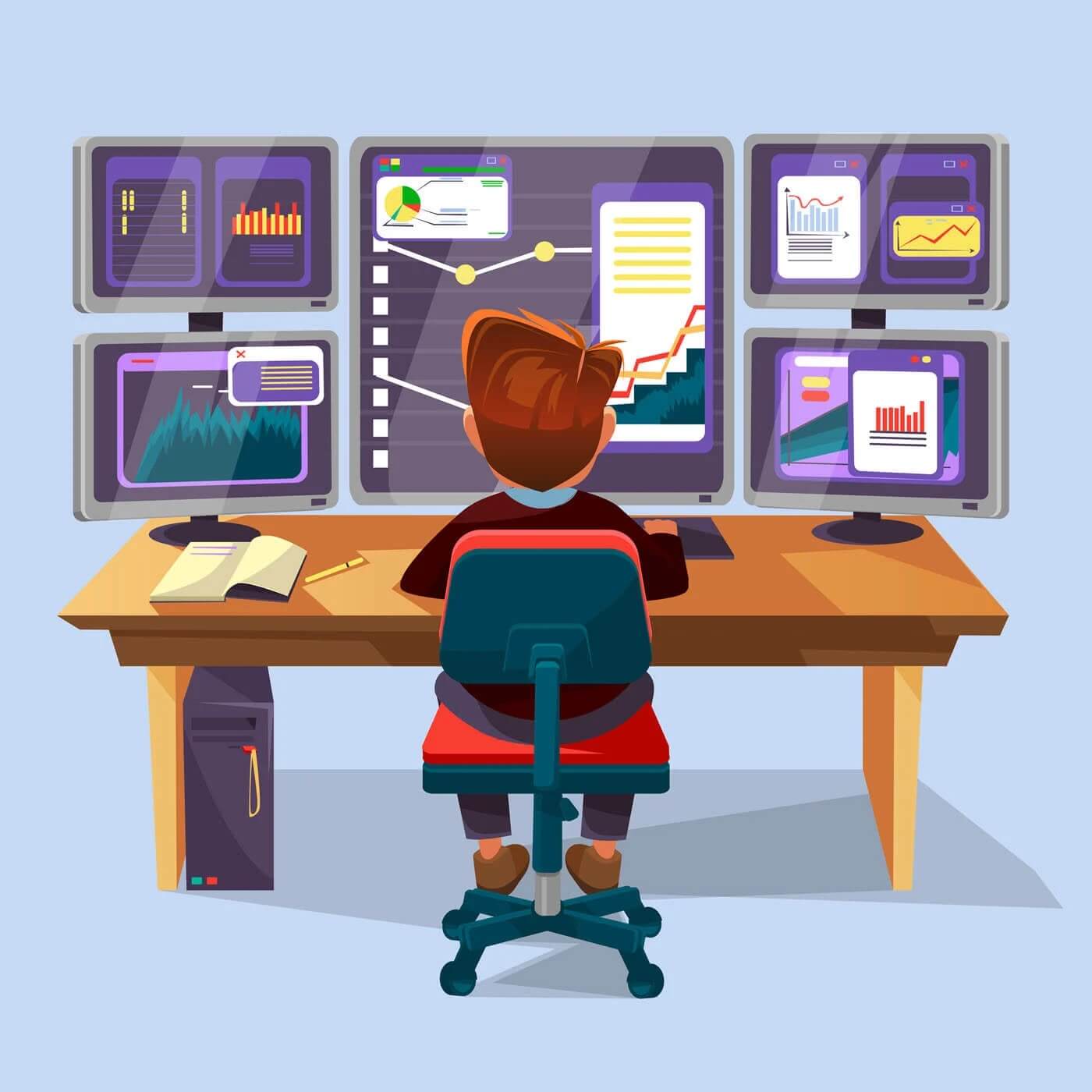Is Your Company Secretly Monitoring Remote Employees?
When the subject of employee monitoring is discussed, do you think of secret cameras and bugged phones? This may sound like something from a suspense novel, and the reality is that if a firm is secretly tracking employee performance, it will be through far less dramatic means.
Employers can use employee productivity monitoring software to keep track of their employees’ work, whether they are working from home or in the office. On top of that, employers need to implement some level of secret monitoring to protect against insider threats.
So, how do you know if your company secretly monitors remote employees? Read on to learn how to spot secret productivity monitoring and get tips on what to do if your employer is secretly spying on remote workers.
What is Employee Monitoring Software?

Employee productivity monitoring software is designed to help employers keep track of their employees. When applied to remote workers, employers can use it to monitor what is being worked on during business hours.
Employee productivity monitoring can be used openly for time tracking and productivity, or it can be used secretly for minimizing insider threats.
There are a variety of employee monitoring solutions available. Some systems allow the employee to record their time on numerous activities, while others will do it for them. Some monitor every keystroke made by an employee, while others only take screen grabs at random intervals.
Internal messaging services are often watched, and employers may choose to track how many minutes are spent using that messaging service. Other websites like Twitter and Facebook, retail sites visited during work hours may also all be tracked.
What Does Employee Productivity Monitoring Software Do?
Secretly monitoring employee behavior for remote work surged during the COVID-19 pandemic. This might cause some employees to panic and wonder – is my work watching me in my home?
The truth is that remote employee monitoring software only has certain features, which means that the software will not operate outside of these feature limitations. For example, the software will track the applications used, websites visited, and sometimes the keystrokes hit only during work hours. If it performs screengrabs, then it will only do this during work hours.
If employees are using a work computer, then the bounds of remote monitoring are fewer. The company computer is the property of the company, and the company has more rights to protect it. Therefore, employees should be mindful of respecting company property and what they do on company time.
We Saw a Surge in Employee Monitoring During COVID-19
Despite the fact that American productivity did not decrease at the height of the COVID-19 pandemic, a third of American workers moved to work from home due to business lockdowns and physical distancing.
Because of this shift, companies adopted secret employee monitoring to keep an eye on their remote workers. Monitoring was conducted through software, which can be installed on the user’s computer with certain authorization. It is designed to track and record everything you do on your computer, from the websites you visit to the programs you use.
This might sound like a significant invasion of privacy, but employers have a right to monitor the hours that they are paying employees. Additionally, if the computer is a company computer, then employers have the right to protect their equipment.
There are times when it can be helpful for employers. For example, if an employee is struggling with their work or seems to be falling behind, secretly monitoring them can allow a manager to step in before the problem escalates. Similarly, secretly monitoring employees is also beneficial when it comes time for performance reviews or pay rate negotiations—it means that nothing will be overlooked. Your boss can analyze your work data and determine that you do deserve that raise. Employee productivity software allows managers to monitor their team’s work without micromanaging and interfering with day-to-day work.
How Has Remote Work Changed Employee Productivity?
The shift away from traditional, office-based working has been picking up speed in recent years as more and more people are now opting for a work-life balance over the hustle of city life. It’s estimated that around 1 in 4 American workers spend at least some time working remotely—and this number is only going to grow.
This isn’t just a trend in the United States either; remote work is becoming increasingly popular worldwide as companies see the benefits of allowing their employees to work from home. Increased productivity, fewer sick days, and lower costs are just some reasons why more businesses are embracing remote working.
The use of employee productivity software is becoming increasingly popular as companies move towards a remote work policy. With employees scattered all over the globe, it can be challenging to track who is productive and who isn’t. This is important for two reasons:
- Remote employees can lie about their work hours and commit time theft
- Remote employees have authorized access to sensitive data; it is, therefore, the businesses’ legal imperative to protect sensitive data from data threats
While remote workers should be aware that their employer may be secretly monitoring them and sometimes this is necessary. If your business regularly collects and manages personally identifiable information (PII), then the business needs to have safeguards in place, like computer monitoring software, to ensure the data isn’t modified, moved, or copied illegally.
How Does Productivity Monitoring Benefit Both Employer and Employee?

While employee monitoring can have negative connotations, there are many reasons that this benefits the employer and can also help employees maintain a work-life balance.
There are other ways that productivity monitoring benefits both employer and employee:
- Preventing data theft: A significant advantage for businesses is that productivity monitoring may assist in the prevention of data theft. Insider threat attacks are a major cause of data theft, and they affect 34% of businesses globally every year. Monitoring software can help stop data theft caused by external attacks and insider threats. Monitoring software records most vital user activity, including opening files, printing papers, and pasting text into a document. With this software, employers can review these activities from a remote console to identify if sensitive information was stolen or if malicious actors gained access to the company network somehow.
- Protecting business assets: Business assets stored on computers need to be protected. Monitoring software can safeguard intellectual property, such as software code and product information, as well as other customer data. Unauthorized data transfers may be detected by monitoring software.
- Recognizing employee efforts: Employee monitoring software tracks attendance and overtime. So if your staff is working overtime hours for which they should be compensated, you can collect this information and compensate your employees. Time tracking also ensures that each team member equally contributed their part to the project.
- Improving employee performance: Secretly monitoring employees can help to improve employee performance. This is because employers can use productivity monitoring to track how much time employees spend working and their overall internet usage and phone calls.
- Protecting employees: Workers’ e-mail and texts may be monitored to protect them from sexual abuse and cyberbullying during internal employee investigations. The software can identify potentially harmful keywords, alerting the appropriate team members of any inappropriate or dangerous behavior.
Using Productivity Monitoring for Your Business
As you can see, secretly monitoring employees is often more beneficial than harmful. Viewing all of your employees’ remote computers’ screens in real-time is like having a surveillance camera on staff. Users are monitored and recorded while they visit websites and spend time on each one. Even when using incognito windows, websites visited are still tracked. This type of software can monitor both desktop and mobile usage, making it an effective tool to keep track of employee work even while they’re working remotely.
Productivity monitoring is necessary for remote employees because employees may spend more time on personal activities than on work-related tasks. Monitoring ensures that the company’s investment in the employee is being used efficiently.
Although secretly monitoring employees can be helpful in some cases, it’s important to remember that risks are also involved. Employers and employees should be mindful of privacy concerns.
Employees may feel that secretly monitoring their internet usage and phone calls is an invasion of privacy. If employees are not meeting their goals, they may be reprimanded or fired. It’s essential to set realistic expectations for your employees and make sure that they understand what is expected of them before secretly monitoring their work performance.
Protect Your Business With Remote Employee Monitoring
Productivity monitoring has become an increasingly common practice in the workplace as more and more companies realize the benefits of secretly tracking employee progress.
If you’re a business owner trying to decide whether or not secretly monitoring your employees is suitable for your company, you must weigh both sides before deciding on productivity monitoring software.
SoftActivity’s employee monitoring software can also help you improve workplace effectiveness, recognize team members for their hard work, and prevent data theft! Our effective workforce management platform allows organizations to monitor remote work at home secretly and protect their business assets. Secretly monitor remote work at home with SoftActivity!
By SoftActivity Team.